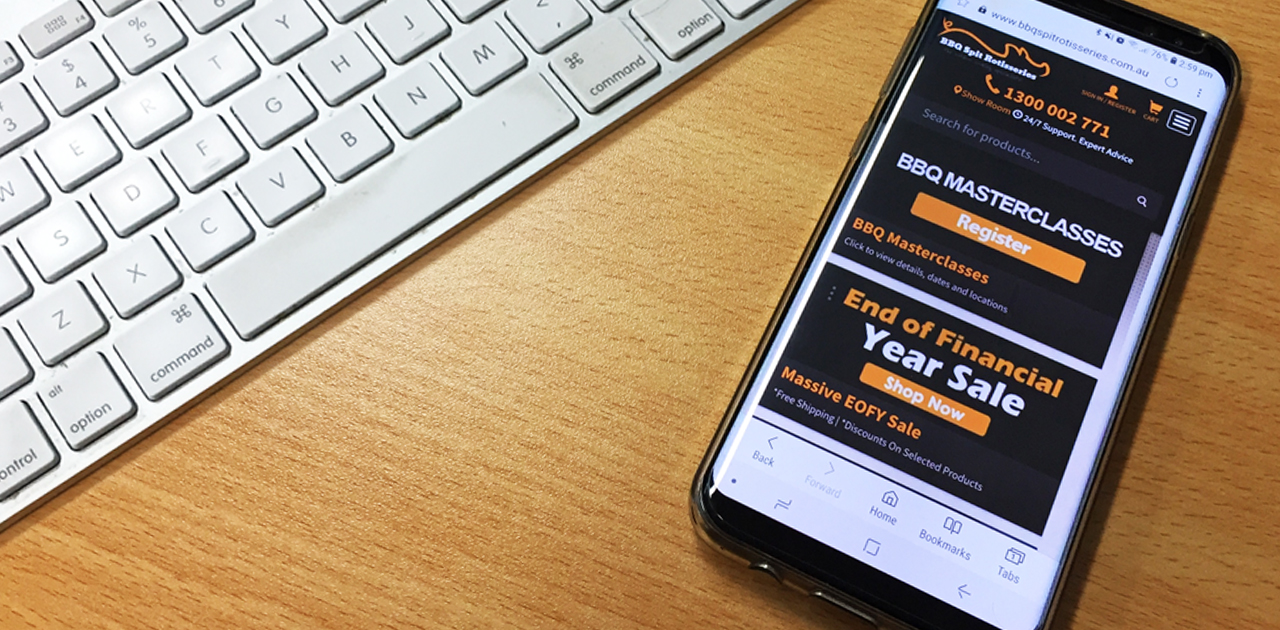10 Easy Tips to Create an Awesome Website
Creating your own website is no easy task. It has to read well and work even better. You need to create something that represents who you are as a brand or a person – making this a big deal.
Before you start creating your website or even the wireframe, there is one fundamental fact that needs to be core. Your website is for your users and customers and not yourself. Do not create your website the way it is because you like it or because you think it is beautiful; well it is still important that it looks great, but the most important thing is will your users like it? Will they be able to use it? Will your users be able to understand the content and navigate through? These are all the questions you should be asking yourself when creating your website. It is putting your users first – not yourself.
Get the Fundamentals Right
Forget about SEO or anything technical first. The basics for every great website are really much more straightforward and obvious than you think. It is about the simplest thing, is it easy to use? Is it fast?
Always do your homework first before you start with a wireframe. Do a little bit of research – have you seen your competitors’ websites? What do you like and do not? Create a list of positives and negatives; and make sure you do not repeat those negatives! Have a look at some ‘big brand’ sites and note what you think. Regardless of what ends up on your list, the idea is to always have a full plan first before creating a wireframe. Do not ‘wing it’!
Here are some really easy tips for creating an awesome website that actually works!
1. Have a Clear Navigation
Don’t make things hard, it’s about how easy I can manoeuvre through your navigation to find the right product, service or page – FAST! Make things clear, if I can reach a product within 2-3 clicks – wonderful! Do not take me on a Merry-Go-Round.
You can get this right by first understanding your user journey or funnel. What do I need to know first, before the second step, right through to actually converting?
2. Do Not Use Jargon
The last thing you want to do is confuse your visitors. Avoid acronyms and words that only you or your peers would understand. As a user, I might feel out of place when I land on your site and do not understand half of the things you are saying. Don’t make your users uncomfortable; you need to let them in and connect with them. You need to appeal to everyone and anyone!
3. Evoke Emotions
Humanise your website. Relate and really speak to me as a user. You first start by not using any jargon as explained above, but you can also take this ‘connection’ to another level – by building trust.
Take for example if you are in the ‘Mortgage Broker’ business. It is something emotional and personal – you are in the business of helping a young family in securing a home loan to buy their dream home, for example. Before I actually put my trust in you, I need to know that the business is real, that there is a solid team behind it, that there is a ‘face’ to this business and you are competent.
The first thing you need to do is stop using stock images. It’s tacky and pointless and comes across as fake and unreal. Use real-life examples – explain to me how you have helped another family in securing their first home. Show me some pictures, who is the team? Who will I be dealing with?
Language is also a big deal. You are not writing a publication or research paper. Also, watch your tone, you do not want to come across as bossy and egotistical. There is a fine line between proving you are the best in the business and also blowing your horn. Users can sense and feel this – if you are in the business of helping others; you need to sound helpful.
4. Site Speed
Don’t ever make me wait for anything – EVER! If your site loads really slowly, I do not need to wait. I can leave, take my business to your competition and never come back.
Try speaking to your hosting company if your site loads slowly. What else can be done? Most of the time they will be really helpful in providing steps to improve the situation. Is your site image heavy? Try compressing them.
There has been much research conducted in this area, specifically on how slow site speed can affect SEO. But forget SEO, it’s basic common sense – it is frustrating to see a pinwheel loading the next page! A recent study concluded that as a page load time goes from 1 to 3 seconds, the probability of bounce increases to 32%, and 1s to 6s, the probability of bounce increases 106%. Imagine that?!
5. Call To Action / Conversion
You should have an overall goal in mind for your website, but you also need to have specific goals set for each target landing page. What do you want a user to do on a specific page? Would it be to leave my email address for a newsletter subscription? Or submit a form for you to contact me?
Whatever it is, remember to make it clear and easy. Don’t make it hard for me to find a way to convert on your site. Some of the things you can do is to ensure you have a contact number visible on the header of the site and also have a floating form on each landing page. You can also use colours to assist conversions. If you want me to subscribe to your newsletter, make sure the colour of the ‘call to action button’ stands out from the background. The trick is to accentuate that button colour and dilute the others.
Also, don’t make it difficult. If you have a form for a conversion action, do not ask me to fill in 10 mandatory fields. Ask what is needed only and ask no more! Have you ever seen a form that requires a last name? Why would you need those details?
6. No Surprises!
Use pop-ups appropriately. Do not slam users with lots of pop-ups. Remember, it will only work if you use it wisely! Have a good reason, make sure it’s succinct and is displayed at the right time.
There have been contradicting responses from the various research done with regards to pop-ups and where it does work. The trick is to have this monitored, have event tracking set up and also maybe Hotjar. Monitor it for a week and see if it works. If you notice a lot of ‘skip’ or ‘exit’ – maybe your language is wrong? Or try different ones, like a hovering one that emerges from the bottom.
The whole idea is to make sure you do not stop me in my tracks when I’m reading or going through a process on your site.
7. Options for Checkout
Your users like to be in control. They do not want to feel ‘handlocked’ to only one way. Provide me with variety in the checkout process; make it clear to me what I can and cannot do.
Today, most eCommerce sites have more than two options for checkout. The most common today are through Credit or Debit Cards and the other would be through PayPal. Some websites that sell large ticket items also provide cash/bank transfers. This is great for those who do not feel comfortable in going through card transactions online.
And what about Afterpay and ZipPay? These are interest-free purchase options available for users that allow them to own a product in instalments. There are no right and wrong methods here but have a look at your competitors. If they provide a payment plan that you don’t – this might be your user’s tipping point to leave and buy elsewhere.
8. Sliders
That huge automated thing that takes out your website’s prime real estate! Some of them are so large that they take up the entire first fold of your homepage. What if you replace this automated slider with static images with specific ‘call to actions’ on them? Instead of force-feeding unnecessary information to a user, I can actually pick and choose where I’m heading.
Also, have you noticed how it looks like on the mobile version of your site? Most of the time, sliders do not work well on mobile because they do not display properly. Take for example Kmart on mobile. Everything is on static images – big thumbnails. It is easy and straight to the point.
9. Rich Content
Always ensure you have quality, solid information/content on site. Do not tease me! Do not drip feed me information in the hope I contact you for more. It is more frustrating than you think! Take me on a journey, explain to me what I need to know from Point A-B-C till the end. I need to know a full story before committing to something (your goals on site). Think what, when, why, who, how, and price if applicable. It is basically your users funnel before a conversion.
10. Mobile Friendly
The global mobile Internet usage now stands at 73% and counting. The question you should be asking – can my users use my mobile site and convert effectively and efficiently? If your answer is no; well you have something to work on now!
You need to make sure your website is mobile optimised and responsive. I need to read content, get to a call to action button or form quickly and also scroll effectively. Never ever create a website that only works on a desktop, it needs and must work on a mobile too!

Never stop writing and continue updating your website once it’s up and running. Always refresh your site with new content as this helps in keeping users/readers active and is also an effective way for you to be the subject matter expert. Don’t just sell something – educate me about it. Try signing up for Google Alerts to find out the latest news on what’s happening around your industry, then talk about it. Upload your blog on site then share on your social media channels – this is a good way to reach out to new users/readers/customers and also keep you active!
Remember, you need to create a site that’s functional, with content to feed and fulfill your users’ needs and requirements. If you tick all of the boxes above, Google sees the value too. Google does not want to rank a site that doesn’t benefit users, and as such you have to create a site that provides value to a user.


